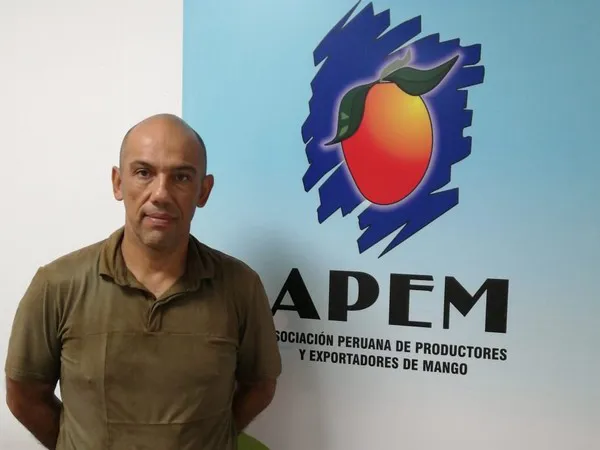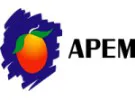The Peruvian mango sector is clearly committed to commercial diversification, which is why it has set its sight on the Asian market, although its greatest aspiration is to have a cohesive industry. These are the main conclusions of the interview with Juan Carlos Rivera Ortega, the managing director of the Peruvian Association of Mango Producers and Exporters (APEM).

Juan Carlos Rivera Ortega.
Strengths & Weaknesses
“We have some comparative advantages because Peru's mango production area is located in a dry tropic area, which means we have high temperatures, many hours of light, and very little humidity. In addition, the land where the crops are located, on the north coast of Peru, is very sandy and drains water a lot, so there are no humidity problems. The fruit receives many hours of sun as it grows, and it achieves a good aroma, skin and pulp color. In addition, there are almost no plagues in the area.”
“Another strength is variety. Peru mainly works with the Kent variety, and it works very well, as it allows hydrothermal treatment, has a good trip and shelf life. Another strength is that Peruvian mango producers have been producing this fruit for thirty years and know it very well. They have great agronomic management that allows them to produce a great product. This has allowed us to gain ground year after year in the United States, the destination market for a third of our exports,” Juan Carlos Rivera stated.
Regarding the sector's weaknesses, the manager of APEM stated: “Our industry is very fragmented; the average size of a mango plot is 2.5 hectares. The 34,000 or so hectares that produce Peruvian mango are in the hands of very small producers. This implies enormous difficulty both for coordination and for the flow of information. We could be making more with the number of hectares, capacity, and know-how we have. However, it is very difficult to do so because there are many players participating in the chain.”
“Thus, one of the main challenges is to have a cohesive industry despite the thousands of players out there. Achieving this would really make a huge difference,” stated Rivera.
“The second challenge, despite the restrictions of the pandemic, is to bet on new markets. We have our sights set on the Asian market. We are reaching this market because we have signed phytosanitary protocols, but we are not exporting the volume we would like. We are studying some technology, be it transport or fruit handling, to reach the Asian market with an acceptable shelf life,” he added.
For more information:

